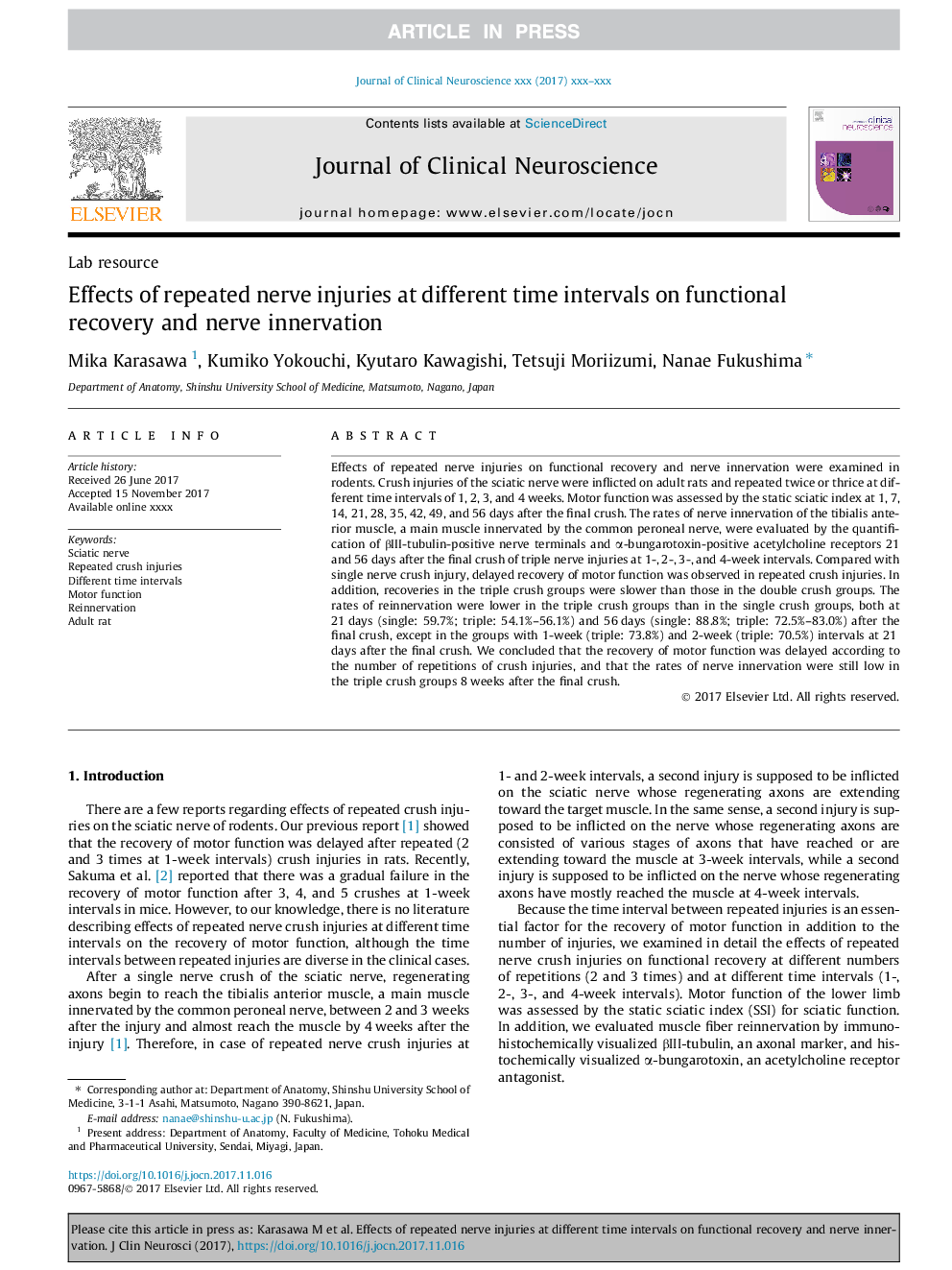| Article ID | Journal | Published Year | Pages | File Type |
|---|---|---|---|---|
| 8685315 | Journal of Clinical Neuroscience | 2018 | 6 Pages |
Abstract
Effects of repeated nerve injuries on functional recovery and nerve innervation were examined in rodents. Crush injuries of the sciatic nerve were inflicted on adult rats and repeated twice or thrice at different time intervals of 1, 2, 3, and 4â¯weeks. Motor function was assessed by the static sciatic index at 1, 7, 14, 21, 28, 35, 42, 49, and 56â¯days after the final crush. The rates of nerve innervation of the tibialis anterior muscle, a main muscle innervated by the common peroneal nerve, were evaluated by the quantification of βIII-tubulin-positive nerve terminals and α-bungarotoxin-positive acetylcholine receptors 21 and 56â¯days after the final crush of triple nerve injuries at 1-, 2-, 3-, and 4-week intervals. Compared with single nerve crush injury, delayed recovery of motor function was observed in repeated crush injuries. In addition, recoveries in the triple crush groups were slower than those in the double crush groups. The rates of reinnervation were lower in the triple crush groups than in the single crush groups, both at 21â¯days (single: 59.7%; triple: 54.1%-56.1%) and 56â¯days (single: 88.8%; triple: 72.5%-83.0%) after the final crush, except in the groups with 1-week (triple: 73.8%) and 2-week (triple: 70.5%) intervals at 21â¯days after the final crush. We concluded that the recovery of motor function was delayed according to the number of repetitions of crush injuries, and that the rates of nerve innervation were still low in the triple crush groups 8â¯weeks after the final crush.
Related Topics
Life Sciences
Neuroscience
Neurology
Authors
Mika Karasawa, Kumiko Yokouchi, Kyutaro Kawagishi, Tetsuji Moriizumi, Nanae Fukushima,
